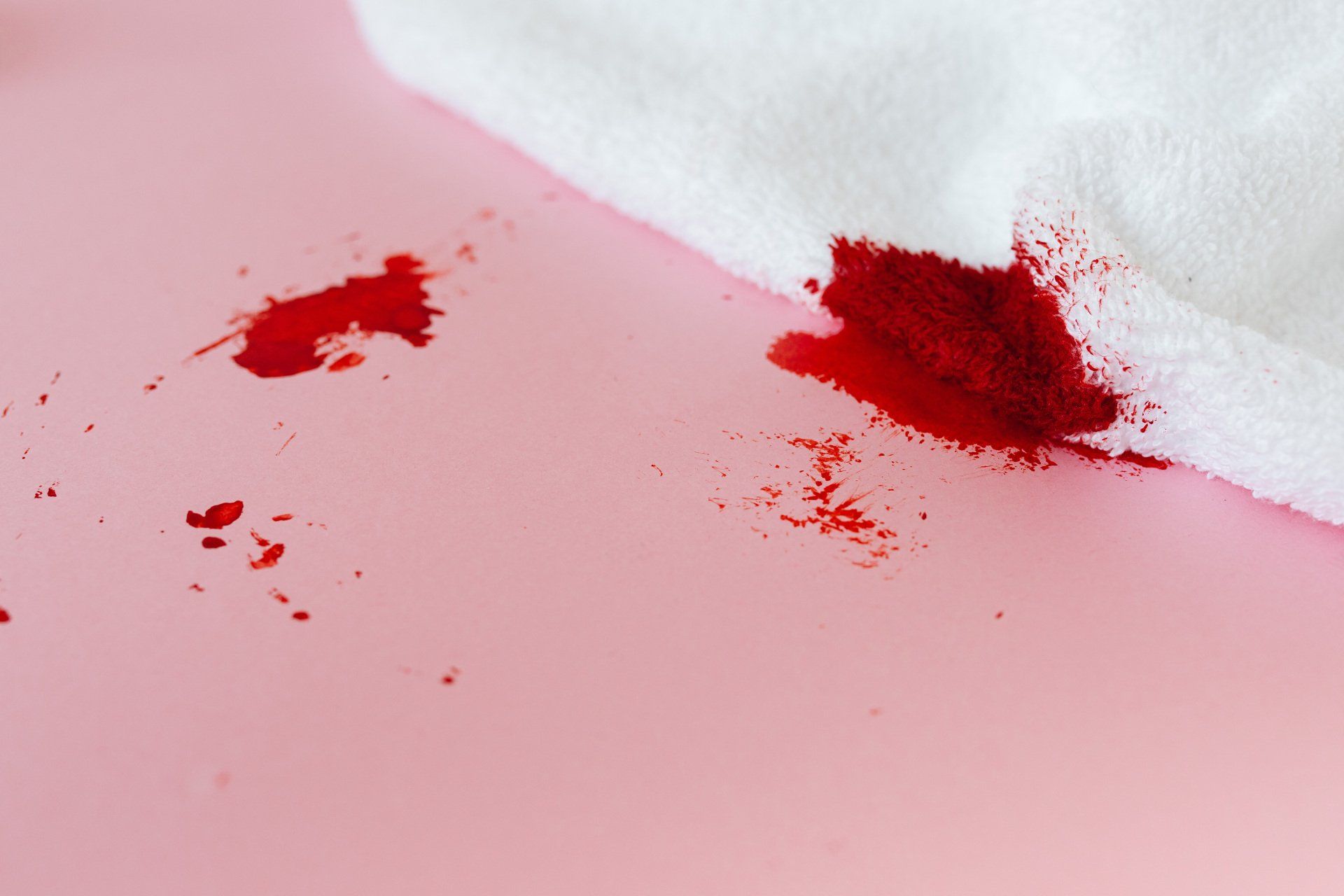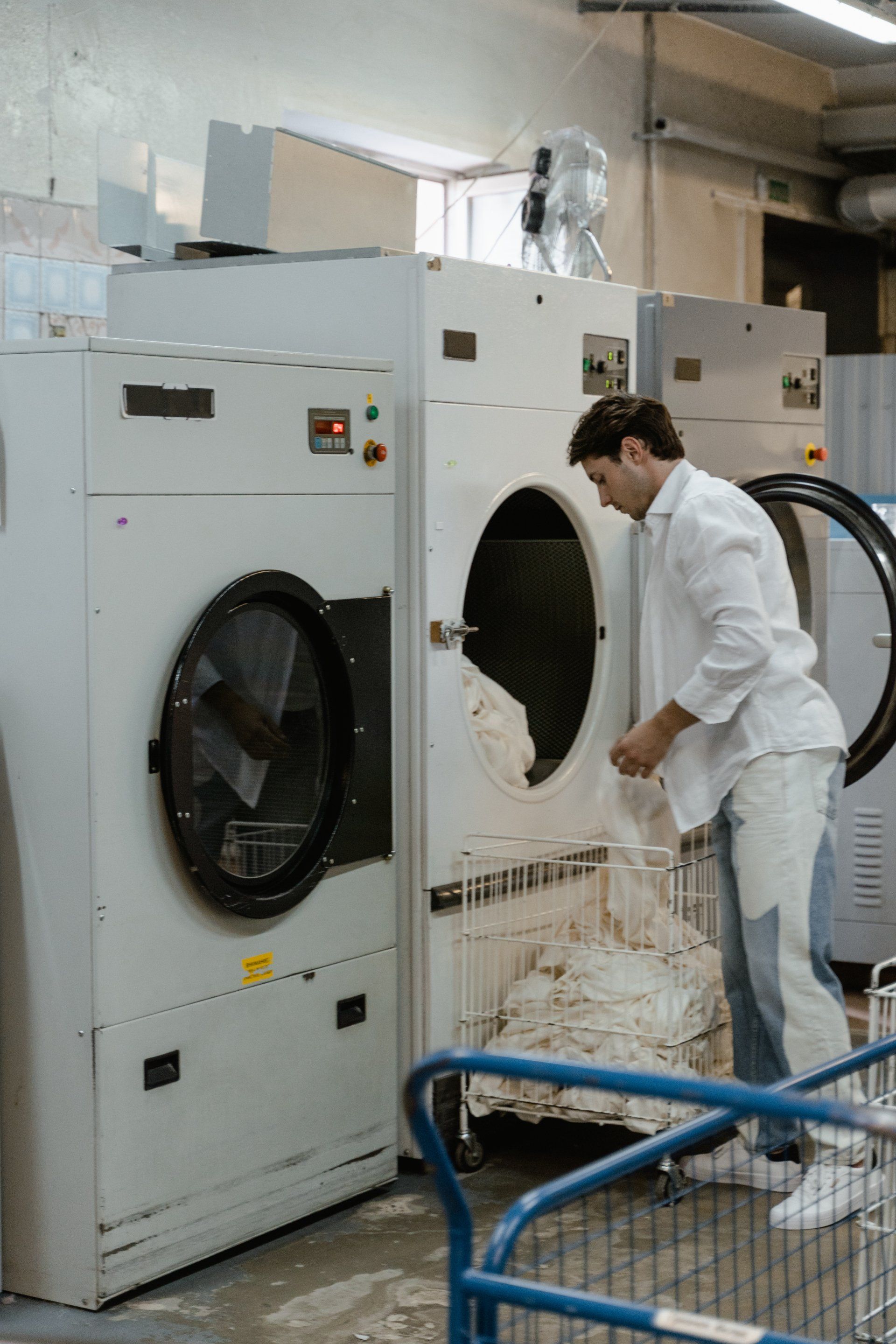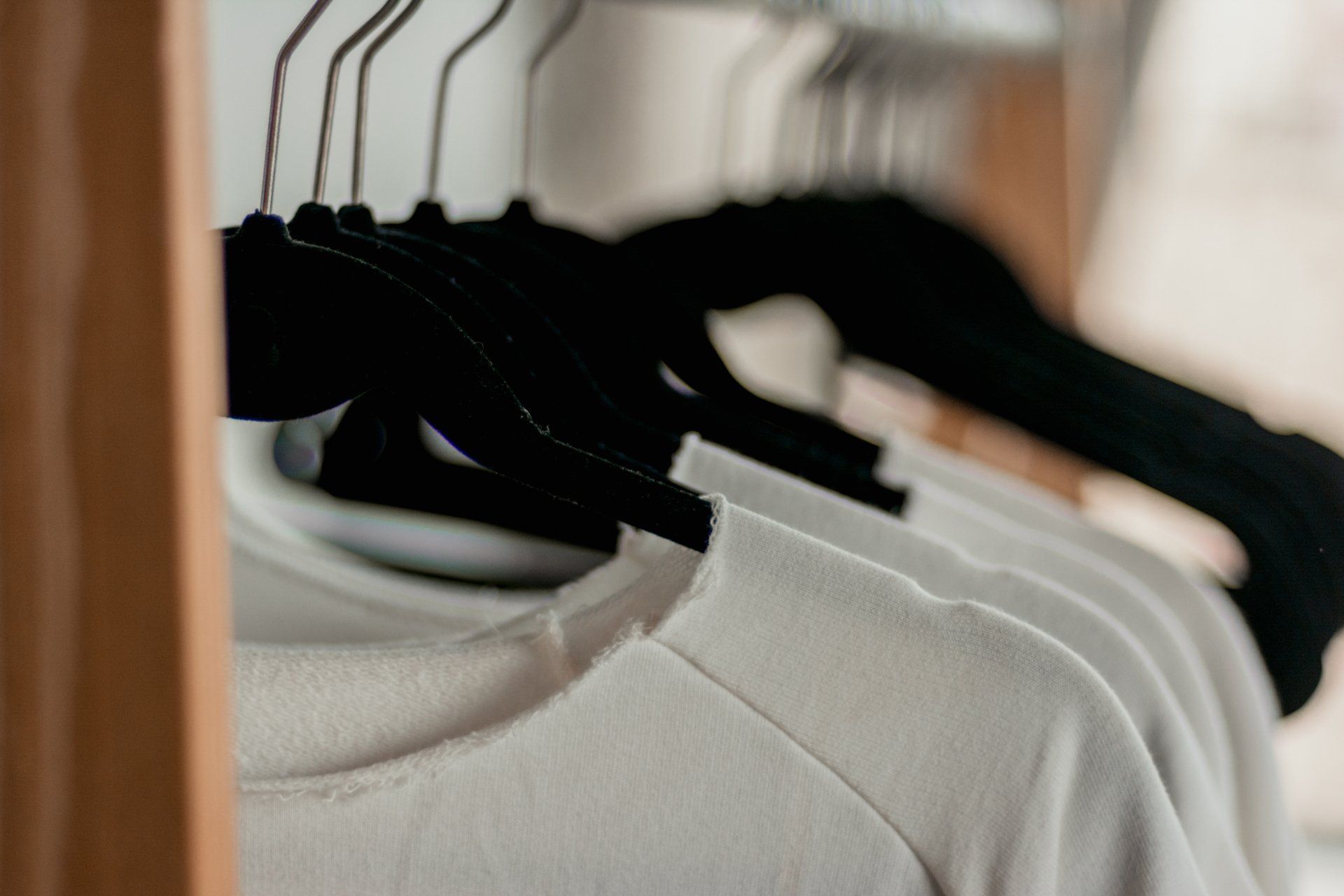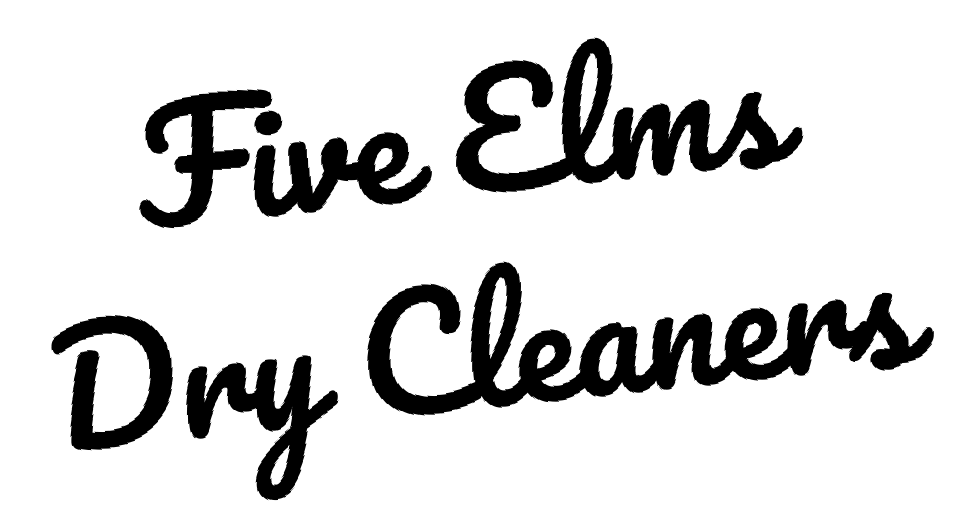Can dry cleaning remove stains?

Dry cleaning is a popular and effective method for removing stains from various types of fabrics. While it can work wonders on certain types of stains, there are limitations to what dry cleaners can achieve. Understanding how dry cleaning works and the types of stains that can be successfully removed is key to managing your expectations. Let's explore the topic in more detail.
Can Dry Cleaners Remove Stains?
Dry cleaners are renowned for their ability to effectively remove stains from clothing and other fabrics. The success of stain removal depends on various factors, including the type of stain, the fabric, and the expertise and equipment of the dry cleaner.
Dry cleaners are highly efficient in the removal of stains from clothing and other fabrics by using solvents such as perchloroethylene or hydrocarbon. These solvents dissolve and eliminate stains from the fabric fibers.
Dry cleaners possess the necessary knowledge and equipment to deal with various types of stains, including oil, grease, ink, and wine. They evaluate the type of stain, select the appropriate solvent and cleaning technique, and effectively eliminate it.
So, can dry cleaners remove stains? Nevertheless, not all stains can be completely eradicated. Some stains, particularly those that have been set for a long time or contain dyes that permanently alter the fabric, may prove more challenging to remove. In such cases, dry cleaners may be able to lighten the stain, but complete removal may not be achievable.
In order to enhance the likelihood of successful stain removal, it is advisable to promptly bring the stained item to the attention of the dry cleaner. Taking prompt action allows professionals to work on the stain before it becomes deeply ingrained in the fabric.
Providing accurate information regarding the type of stain and any previous attempts at removal assists the dry cleaner in determining the most effective cleaning method.
How Does Dry Cleaning Work?
Dry cleaning involves using a solvent rather than water to clean fabrics. The most commonly used solvent is perchloroethylene, which is efficient in dissolving grease, oils, and other stains without damaging the fabric. The process typically includes the pretreatment of stains, followed by the immersion of the fabric in the solvent and then a thorough drying process.
Dry cleaning is a method utilised to clean clothing and textiles without using water. It is commonly used for delicate or special garments that cannot withstand regular washing.
Here is a simplified example of the dry cleaning process:
- The garments are thoroughly examined for stains and damage and labeled for identification.
- Specialists solvents or spotting agents are applied to treat the garments and remove stains.
- The clothing items are placed inside a dry cleaning machine.
- Within the machine, the clothes are gently rotated and sprayed with a solvent, usually perchloroethylene.
- The solvent dissolves and removes dirt, oils, and odours from the fabric.
- The solvent is continuously filtered and distilled to ensure cleanliness.
- Once the cleaning cycle is complete, any excess solvent is extracted from the clothes.
- The clothes are then placed in a drying chamber where warm air is used to evaporate any remaining solvent.
- The clothes are pressed or steamed to remove wrinkles and restore their original appearance.
After the process, the clothes undergo careful inspection once again to ensure cleanliness before being packaged and returned to the customer. Dry cleaning is a precise and intricate method that requires professional expertise to achieve optimal results.
Types of Stains that Can Be Removed by Dry Cleaners
Dry cleaners have a high success rate in removing certain types of stains. When it comes to dry cleaning, there's a wide range of stains that professional cleaners can tackle. From stubborn oil-based stains to pesky ink or food stains, you'll be amazed at what these experts can handle.
In this section, we'll delve into the different types of stains that can be effectively removed by dry cleaners. So, whether you're dealing with grease stains or wine spills, you can trust that they have the expertise to restore your garments to their pristine condition.
1. Oil-based Stains
Oil-based stains can be effectively removed by dry cleaners who have the expertise and equipment. Here's why they are successful:
- Specialised solvents: Dry cleaners use solvents specifically designed to break down oil-based stains and eliminate them from fabrics.
- Pre-treatment: Dry cleaners often apply stain removers directly to the affected areas before the cleaning process, breaking down the oil-based stain and preparing it for removal.
- Expertise: Dry cleaners possess the knowledge and experience to identify different types of oil-based stains and select the most appropriate cleaning techniques and solvents for each case.
- Professional equipment: Dry cleaners employ specialized cleaning machines that can agitate the fabric and effectively eliminate oil-based stains without causing any damage to the garment.
- Attention to detail: Dry cleaners pay careful attention to oil-based stains during the cleaning process, ensuring complete removal before returning the garment to the customer.
To maximise the effectiveness of stain removal, consider these suggestions:
- Act quickly: Bring your garment to the dry cleaner as soon as possible after the oil-based stain occurs.
- Provide detailed information: Inform the dry cleaner about the fabric type and specific details of the oil-based stain to customise their cleaning process.
- Follow care instructions: After the dry cleaner eliminates the oil-based stain, make sure to follow their care instructions for garment longevity.
- Inspect the garment after cleaning: Thoroughly inspect your cleaned garment to ensure the effective removal of the oil-based stain before leaving the dry cleaner's premises.
2. Grease Stains
Dry cleaners are experts in the removal of grease stains. They go through the important steps mentioned below:
- Assessment: Dry cleaners carefully assess the fabric and the extent of the grease stain to determine the most suitable course of action.
- Pre-treatment: They directly apply a specialised solvent or detergent to the grease stain.
- Expertise: Dry cleaners select the appropriate technique based on the fabric type and the nature of the stain.
- Spot cleaning: They gently blot the stain using a clean cloth or sponge, avoiding any rubbing.
- Specialised equipment: Dry cleaners utilise professional-grade cleaning equipment to effectively eliminate grease stains.
- Knowledge of fabrics: They have thorough understanding of different fabric properties to ensure both safe and efficient cleaning.
- Post-cleaning inspection: Dry cleaners carefully examine the garment to ensure complete eradication of the stain before returning it to the customer.
With their expertise, specialised equipment, and fabric knowledge, dry cleaners guarantee that your garments are returned to you clean and spotless.
3. Ink Stains
Ink stains can be quite difficult to get rid of. Luckily, dry cleaners have effective methods and solutions to deal with them.
Dry cleaners first determine the type of ink stain to choose the most suitable treatment. They start by applying a specific ink stain remover to the affected area before starting the cleaning process.
Carefully, they use techniques like blotting or gentle rubbing to lift the ink from the fabric. In some cases, dry cleaners might use solvents specifically designed for ink stain removal. Stubborn ink stains may require multiple treatments to completely eliminate them.
Let's consider a scenario where a customer accidentally spilled ink on their favourite white shirt. They immediately took it to a professional dry cleaner who successfully removed the ink stain using their expertise and specialised methods.
The shirt was returned to the customer in flawless condition, without a single trace of the ink stain. Needless to say, the customer was extremely satisfied with the result and continued to depend on the dry cleaner for all their stain removal needs.
4. Wine and Food Stains
Dry cleaners have specialised expertise in tackling wine and food stains on garments. They possess the necessary solvents and stain removers specifically designed to effectively remove these types of stains.
So, when you come across a wine or food stain on your beloved clothing, it is advisable to entrust it to a professional dry cleaner who can skillfully restore your garment to its previous pristine state.
Stains that Cannot Be Removed by Dry Cleaners
While dry cleaners can work wonders, there are certain stains that may be challenging or impossible to remove completely.
When it comes to getting rid of stubborn stains, dry cleaners have their limitations. Let's dive into the world of stains that cannot be removed by dry cleaners. We'll uncover the challenges posed by set-in stains, bleached or discoloured stains, and tricky stains on delicate fabrics.
Get ready to discover why some stains just refuse to budge, even with professional help.
1. Set-In Stains
Set-In Stains are stubborn stains that have not been adequately eliminated from the fabric. These types of stains have deeply penetrated the fabric fibers, making them quite challenging to remove.
Examples of set-in stains include stubborn coffee stains, persistent wine stains, and grease stains that were not promptly addressed.
It's important to note that dry cleaners may not always be able to completely remove set-in stains. The longer a stain remains on the fabric, the more difficult it becomes to eradicate.
Professional dry cleaners possess specialised equipment and expertise to help minimise the visibility of set-in stains. Here are some suggestions to effectively deal with set-in stains:
- Act quickly: Always take immediate action to treat stains on clothing in order to prevent them from becoming set-in.
- Provide detailed information: Inform the dry cleaner about the specific set-in stain and provide any pertinent details regarding its origin.
- Follow care instructions: Certain fabrics may require special care in order to eliminate set-in stains. It's advisable to follow the manufacturer's care instructions or consult with the dry cleaner for specific recommendations.
- Inspect the garment after cleaning: After the cleaning process, carefully examine the garment to ensure that the set-in stain has been successfully treated. If there are any remaining residues or discolouration, promptly inform the dry cleaner for further attention.
2. Bleached or Discoloured Stains
Bleached or discoloured stains can be quite stubborn and challenging to remove. Traditional dry cleaning methods and solutions are not effective in restoring the original colour or getting rid of bleach marks from fabric. These types of stains are usually caused by bleaching agents, harsh chemicals, exposure to sunlight, or oxidation.
If you find that your garment has been affected by bleaching or discolouration, it is highly recommended to consult a professional garment restoration specialist. They have the expertise to provide potential solutions for these types of stains. It is important to avoid attempting to remove or treat these stains yourself as it may further damage the fabric or alter its appearance.
By following these guidelines and seeking professional advice, you can find solutions for bleached or discoloured stains on your clothing. It is important to note that complete restoration may not always be possible, so prevention is key to avoid such stains in the future.
3. Stains on Delicate Fabrics
When removing stains on delicate fabrics, rely on a reliable dry cleaner. Follow these steps:
- Choose an experienced dry cleaner for delicate fabrics.
- Identify the stain type on the fabric before proceeding.
- Inform the dry cleaner about the fabric's delicacy and the specific stain.
- Follow the garment manufacturer's care instructions.
- Ask the dry cleaner to perform a spot test on an inconspicuous area.
- If the stain can be safely removed, the dry cleaner will select the appropriate method.
- After cleaning, inspect the garment thoroughly.
Trust the dry cleaner's expertise and provide necessary information when dealing with delicate fabrics. These steps maximise the chances of successfully removing stains.
Factors that Affect the Success of Stain Removal by Dry Cleaners
The success of stain removal by dry cleaners depends on several factors:
- Type of Fabric: Different fabrics react differently to solvents, and some may be more resistant to stain removal.
- Type and Age of Stain: Certain types of stains, such as those from dyes or acids, may be more challenging to remove. The longer a stain has been present, the more difficult it may be to eliminate completely.
- Expertise and Equipment of the Dry Cleaner: The skill and experience of the dry cleaner, as well as the quality of their equipment and solvents, can significantly impact the success of stain removal.
When it comes to removing stains, dry cleaners face various factors that can determine the success of the process. From the type of fabric and the nature of the stain to the expertise and equipment of the dry cleaner, each element plays a crucial role.
Understanding these factors is key to achieving optimal stain removal results. So, let's dive into the world of dry cleaning and explore how these three key factors impact the effectiveness of stain removal.
1. Type of Fabric
When it comes to dry cleaning, the type of fabric is crucial for stain removal. Different fabrics have different properties and require specific cleaning procedures. Here is a table that shows the fabric type and its suitability for dry cleaning:
| Fabric Type | Suitability for Dry Cleaning |
|---|---|
| Wool | Highly suitable as it retains its shape and texture |
| Silk | Often recommended as it is delicate and easily damaged by water-based cleaning |
| Cotton | Can be dry cleaned, but also suitable for regular laundering |
| Linen | Some linen garments may be suitable for dry cleaning, but others can be laundered safely |
| Polyester | Can be dry cleaned, but also suitable for machine washing |
Note that the suitability for dry cleaning may vary depending on the fabric's composition and any attached embellishments or accessories. Consult the care label or seek professional advice for the most appropriate cleaning method.
Dry cleaning dates back to the mid-19th century when a French dye-works owner accidentally spilled kerosene on a dirty tablecloth and noticed it became cleaner. This discovery led to the development of dry cleaning, which uses organic solvents instead of water for stain and dirt removal. Advancements in technology have made dry cleaning widely available and effective for garment care.
2. Type and Age of Stain
The achievement of stain elimination by dry cleaning establishments depends on the type and age of the stain. Different techniques and procedures are necessary to effectively eliminate distinct stains.
When it comes to the age of the stain, fresh stains are easier to eliminate compared to old stains. The longer a stain persists, the more complex it becomes to completely remove. Dry cleaners have a better chance of eliminating recent stains as they haven't deeply penetrated the textile fibres.
Regarding the type of stain, dry cleaners are skilled in treating oil or grease stains by utilising specialised solvents and techniques. They can also often remove ink stains, depending on the type of ink and fabric.
While dry cleaners can effectively remove many stains, there are some that may be impossible to remove. Set-in stains, which have been neglected or treated with do-it-yourself methods, are challenging to remove and may have caused permanent damage to the fabric.
Dry cleaners may not be able to fully restore the original color and texture of fabrics that have been bleached or discoloured by specific substances. Delicate fabrics may also not respond well to treatment or may even be further damaged.
To achieve successful stain elimination, it is crucial to communicate the type and age of the stain to the dry cleaner. Taking prompt action, providing comprehensive information, following care instructions, and inspecting the garment after cleaning can also help maximise the stain elimination process.
The expertise and equipment of the dry cleaner are essential factors in achieving triumphant stain removal.
3. Expertise and Equipment of the Dry Cleaner
The expertise and equipment of the dry cleaner play a vital role in effectively removing stains. Skilled dry cleaners possess extensive knowledge and expertise in treating various types of stains.
State-of-the-art technology guarantees the efficient removal of stains. Dry cleaners utilise specialised solvents and chemicals that have been thoroughly tested and proven to be effective in eliminating stains.
Stringent quality control measures ensure that the process of stain removal is executed with precision and care. Taking these factors into consideration is crucial when selecting a dry cleaner to ensure optimal results.
The expertise of the dry cleaner determines their ability to handle different types of stains and fabrics. Advanced technology and high-quality cleaning agents are also essential for successfully removing stains.
Opting for a highly skilled dry cleaner equipped with top-of-the-line equipment ensures that your garments receive the best care and have a greater chance of effectively removing stains.
Throughout history, advancements in dry cleaning technology and the expertise of professionals have constantly enhanced the ability to eliminate stains, making dry cleaners an invaluable resource for maintaining the cleanliness and stain-free condition of our garments.
Tips for Maximising Stain Removal from Dry Cleaners
When it comes to maximising stain removal from dry cleaners, there are some tips you need to know. Act quickly, provide detailed information, follow the care instructions, and inspect the garment after cleaning.
These sub-sections will guide you on how to get the best results from your dry cleaner and ensure those stubborn stains vanish like magic! So, let's dive into these tips and bid farewell to pesky stains.
To increase the chances of successful stain removal by dry cleaners, consider the following tips:
1. Act Quickly
When it comes to removing stains, it is crucial to act promptly in order to achieve successful stain removal by dry cleaners. Please follow the instructions below:
- Assess the stain immediately upon discovering it.
- Identify the type of stain (such as oil-based, grease, ink, wine, or food stains).
- Prevent the stain from setting or becoming more difficult to remove.
- Gently dab the stain with a clean cloth or paper towel to absorb any excess liquid or residue.
- Avoid rubbing or scrubbing the stain to prevent it from spreading or penetrating deeper into the fabric.
- Take the garment to a professional dry cleaner as soon as possible.
- Provide the dry cleaner with comprehensive information about the stain, fabric, and any previous attempts to remove it.
- Follow the dry cleaner's care instructions, including any pre-treatment recommendations.
- Thoroughly inspect the garment after cleaning to ensure that the stain has been completely removed.
By acting quickly and following these steps, you increase the likelihood of successful stain removal by dry cleaners.
2. Provide Detailed Information
Providing detailed information to the dry cleaner is crucial for maximising stain removal. By specifying the type of stain, location, and size, you can provide the dry cleaner with the necessary details to determine the appropriate cleaning agents and methods. In addition, sharing the type of fabric will assist in selecting the correct solvent and cleaning process, ultimately avoiding any potential damage.
It is also essential to inform the dry cleaner about any previous attempts made to remove the stain. This information will allow them to understand the resistance of the stain and adjust their technique accordingly. Providing care instructions for proper handling during the cleaning process is equally important.
Further details about the garment, including its colour, age, and condition, can greatly assist the dry cleaner in making informed decisions. These additional details can help the dry cleaner assess potential risks in the cleaning process and ensure the best possible outcome.
By providing detailed information, you will be assisting the dry cleaner in providing the best possible stain removal for your garment. This increases the chances of successful cleaning and preserves the quality of your clothes.
3. Follow the Care Instructions
To achieve the best results from dry cleaners in removing stains, it is essential to follow the care instructions diligently. Care labels provide important guidelines for handling and cleaning clothes. Before taking your clothing to the dry cleaners, make sure to read and understand the care instructions mentioned on the label.
When dropping off your garment, it is important to inform the dry cleaner about any specific care instructions or recommendations mentioned on the label. Sharing these care instructions will ensure that the dry cleaner follows the appropriate cleaning method.
Providing detailed information about the type of stain and any previous treatments you have tried is crucial. This information will assist the dry cleaner in determining the best approach for effectively removing the stain.
If you have small, localised stains that may not require a full cleaning, it is worth inquiring about spot cleaning services provided by the dry cleaner. This can be a convenient and cost-effective option for treating specific stains.
Before leaving the dry cleaner, it is important to thoroughly inspect the garment to ensure that the stain has been completely removed. Check for any new damages or discolouration that might have occurred during the cleaning process.
4. Inspect the Garment After Cleaning
After dry cleaning, thoroughly examine the garment to ensure successful cleaning. Follow these steps to inspect the garment:
- Take a close look at the entire garment under good lighting to check for any remaining stains or discolouration.
- Pay special attention to areas such as the collar, cuffs, or hems where stains were present before cleaning.
- Run your hand over the fabric to feel for any residue or stiffness, which could indicate incomplete cleaning.
- Carefully check for any damages or changes in the condition of the garment, such as loose buttons, threads, or missing embellishments.
- Try on the garment to ensure it fits properly and feels comfortable. Be mindful of any unusual odours.
- If you're satisfied with the inspection, remember to remove any plastic covers or bags before storing or wearing the garment.
To maximize the effectiveness of the inspection, consider the following suggestions:
- Should you notice any stains or issues after the inspection, reach out to the dry cleaner immediately for assistance.
- When providing the garment for cleaning, give detailed information about any stains or concerns for a thorough inspection and proper treatment.
- Adhere to the care instructions given by the dry cleaner to preserve the garment's quality and prolong its lifespan.
- Regularly inspect your garments after wearing them to identify any new stains or damages that may require professional cleaning.
Remember, inspecting your garment after cleaning is essential to ensure satisfaction and promptly address any remaining issues.
While dry cleaners have the expertise and specialised equipment to remove many types of stains, it's important to manage your expectations and understand that some stains may be difficult or impossible to eliminate completely.
By following these guidelines and working closely with your dry cleaner, you can maximise the chances of successful stain removal and keep your fabrics looking clean and fresh.
To find out if your stain is suitable for removal, contact us for more guidance and advice.









